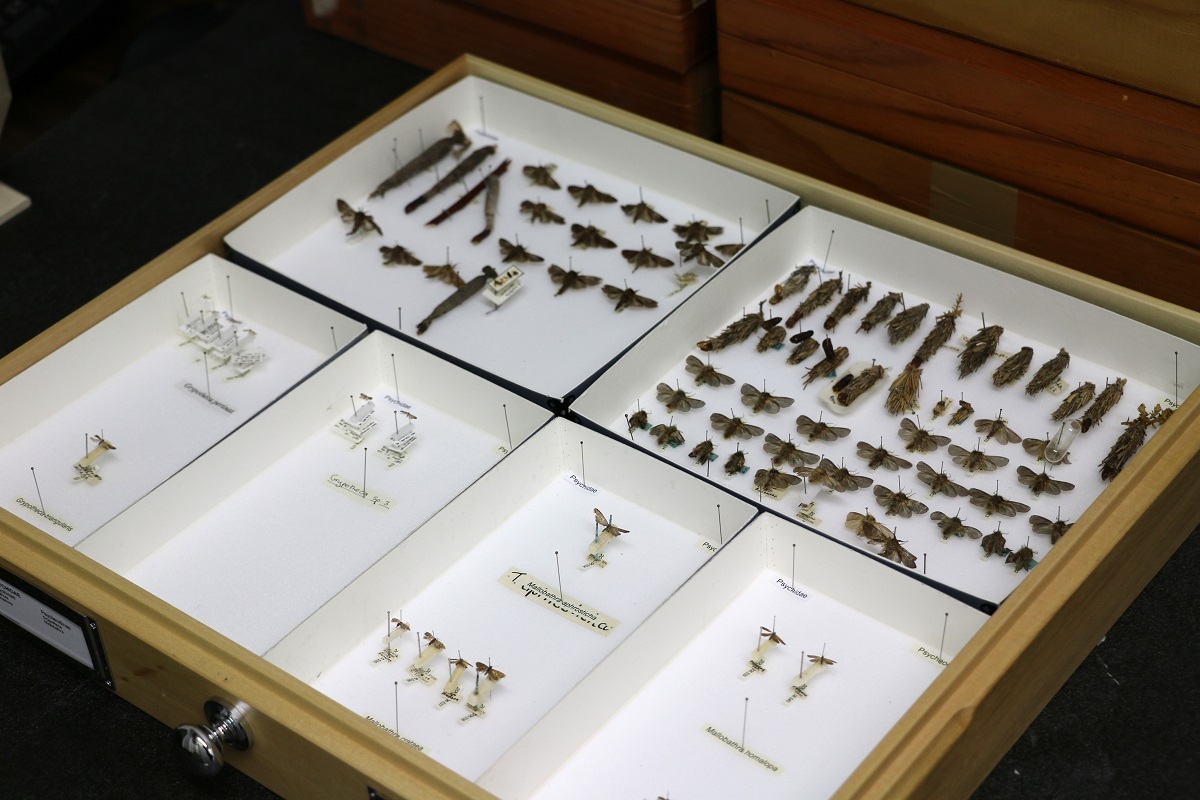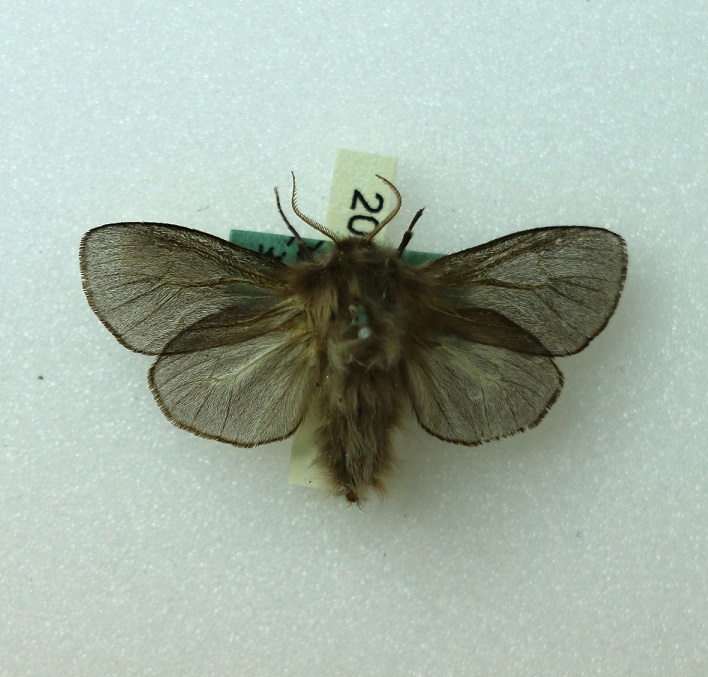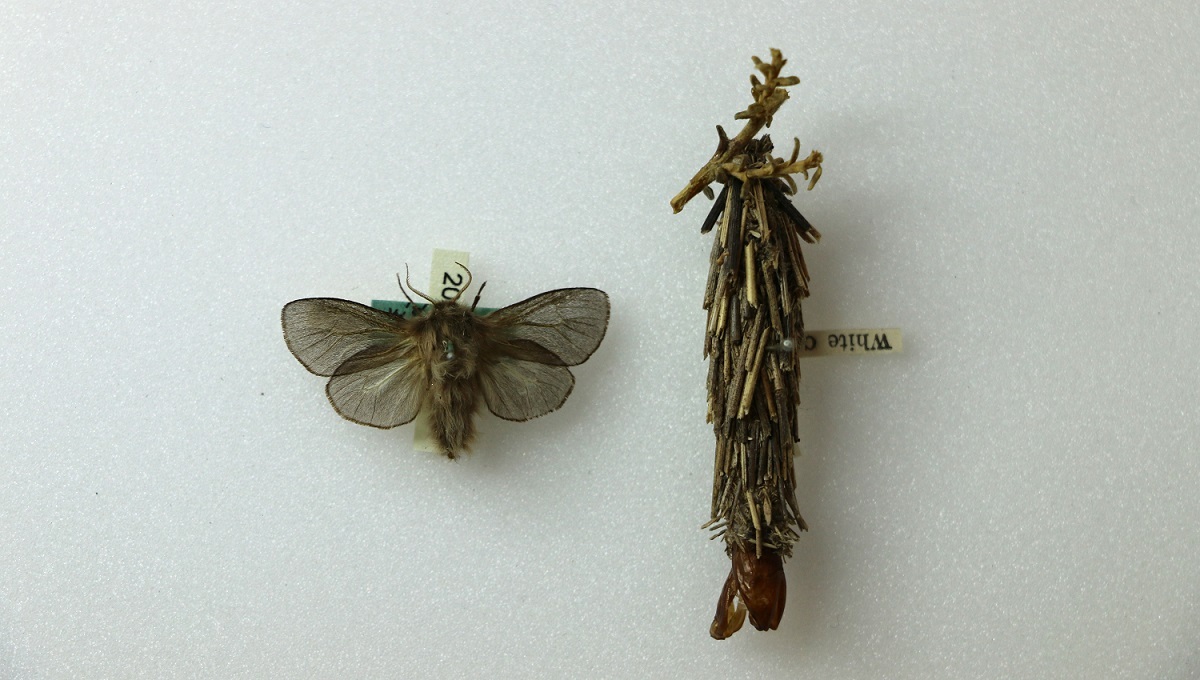It’s often assumed that the millions of objects that museums care for sit in dark store rooms and never see the light of day. While it’s true that collections are stored in the dark to help preserve them, access to them is important. Collections technician Johnathon Ridden throws light on a species of moth in the Museum's pinned insect collection.
Researchers are constantly reviewing and researching different groups of insects and require access to these collections. This is to get a better understanding of the diversity of insects and their relationships to one another (and learn some interesting things about their biology!).

Canterbury Museum has 120,000 specimens in the pinned insect collection that have been collected and identified over decades. Many of these are only found in New Zealand and some are very rare. There are more than 12,000 described species of insects in New Zealand and the 1,700 species of moths (Lepidoptera) are a large portion of them (MacFarlane et al 2010). Canterbury Museum holds more than 20,900 moth specimens in its pinned insect collection. One of particular interest in the collection is a species of bag moth (Orophora unicolor).
This species was originally described by the English lepidopterist Arthur G Butler in 1877 with the scientific name Psyche unicolor (Butler 1877). On the other side of the world and completely independently Canterbury entomologist Richard W Fereday described the same species of moth with a different scientific name Orophora toumatou (Fereday 1877). Butler's description was published in Proceedings of the Zoological Society of London in 1877. Fereday was unlikely to have had the chance to read it when he published his description in December of that year in the Transactions and Proceedings of the New Zealand Institute.

The unicolor part of Orophora unicolor refers to the name described by Butler. It has priority as he described the species first. However, Butler’s placement of the species in the genus Psyche was not correct as it refers to a different group of moth species. Fereday was correct in recognising that this species did not belong in Psyche so Fereday described a new genus for this species Orophora. The biology of Orophora unicolor has several interesting aspects.
Moths go through the process of metamorphosis, which means they change in physical form as they grow from an egg, to larva (caterpillar), to pupa (chrysalis) and then to an adult. Orophora unicolor larva construct homes for themselves using vegetation from tussock grasslands. The larvae produce silk that holds together the cases (also referred to as bags), weaving onto the case the ends of tussock shoots.

One reason for creating a case like this is to protect the developing larva and pupa from predators such as birds. The benefit of using tussock is that the cases blend in to the background, making it even harder for birds trying to get an easy meal. Once the larva are fully grown the male moth emerges in its furry coat and proceeds to fly around looking for mates. Orophora unicolor females are actually wingless and never leave the case they grow up in. Once fully mature, females wait until a male pops by her case for a visit to reproduce.
So why do we collect and curate insects like this fascinating species of moth? In the case of the Orophora unicolor moths in the collection, they are currently preparing for a trip to Kyushu University, Japan! They will be carefully packaged and sent to Emeritus Professor Toyohei Saigusa who will examine the features of the moths and cases up close. This will allow Professor Saigusa, who is an expert on the group, to determine how Orophora unicolor relates to other species of moths. This is a great example of how collections don’t end up in a dark store room never to be seen again.
References
Butler, A G. (1877). On two collections of heteroceros Lepidoptera of New Zealand, with descriptions of new species. Proceedings of the Zoological Society of London (2).
Fereday, R W. (1877). Description of new genera and species of Psychidae. Transactions and proceedings of the New Zealand Institute.
Macfarlane, R P, Maddison, P A, Andrew, I G, et al (2010). Phylum Arthropoda subphylum Hexapoda: Protura, springtails, Diplura, and insects. New Zealand inventory of biodiversity, 2, 233-467.





